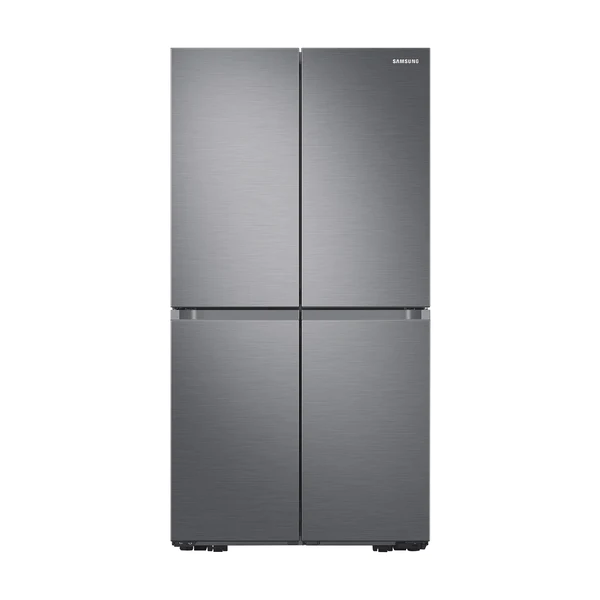
If you own a Samsung refrigerator, you may have experienced the annoying problem of your fridge freezing up. This can cause your food to freeze, your water dispenser to stop working, or your fridge to make a loud noise.😡
But why does this happen and how can you prevent it? In this article, we’ll explain the possible causes of your Samsung refrigerator freezing up and the solutions you can try to fix it.👇
Your Samsung refrigerator keeps freezing up because of warm air entering the fridge, ice maker or water dispenser issues, faulty internal components, or defective control board. To prevent it, you should check the door seals, dispenser flaps, temperature settings, vents, and other parts regularly.
Depending on the cause of your Samsung refrigerator freezing up, you may need to perform different actions to fix it. Here are some common scenarios and solutions:
If you set the temperature of your fridge too low, you may cause your food to freeze or your water dispenser to freeze up. The recommended temperature for the fridge is between 37°F and 40°F, and for the freezer is between 0°F and 5°F.
To adjust the temperature settings, you can use the control panel on your fridge. Press the Fridge or Freezer button repeatedly until you reach the desired temperature. You can also use the SmartThings app on your phone to control the temperature remotely.
Power Cool is a feature that increases the cooling power of the fridge to maximum for a short period of time. It can be useful for cooling down items quickly or for restoring the temperature after a power outage. However, if you leave it on for too long, it can also cause your fridge to freeze up.
To turn off Power Cool, you can press and hold the Fridge button for 3 seconds until the light goes off. You can also use the Fridge Manager app on your Family Hub model to turn off Power Cool.
Frost can form in the fridge if warm air enters the fridge through gaps in the door seal or the dispenser flap. This can cause condensation and ice formation on the back wall of the fridge or on the vents. This can block the air flow and cause overcooling.
To prevent frost buildup, you should check the door seal and the dispenser flap regularly and make sure they are clean and intact. You should also avoid opening the door too frequently or for too long. If there is already frost in the fridge, you should defrost it manually by unplugging the fridge and letting it melt.
Some food items have high water content and are more likely to freeze if they are placed near the back, bottom, or in front of the vents of the fridge. These items include meat, fruits, vegetables, dairy products, and beverages.
To prevent food from freezing, you should store these items in their designated drawers or shelves instead of near the vents. You should also avoid overloading or underloading your fridge, as this can affect the air circulation and temperature distribution.
The ice maker or water dispenser can leak or malfunction due to various reasons, such as a clogged water filter, a damaged water line, a faulty valve, or a defective ice maker assembly. This can cause water to drip or freeze inside or outside the fridge.
To fix this issue, you should check the water filter and replace it if it’s dirty or expired. You should also check the water line and valve for any leaks or damages and repair them if needed. If the ice maker assembly is faulty, you may need to call a professional technician to replace it.
These are some of the internal components that regulate the temperature and operation of your fridge. If any of them is faulty, they can cause your fridge to freeze up by sending incorrect signals or not responding properly.
To diagnose this issue, you may need to use a multimeter to test the voltage output and resistance of these components. You may also need to check for any error codes on your control panel or app that indicate a problem. If any of these components is faulty, you may need to call a professional technician to replace them.
Here are some frequently asked questions and answers about Samsung refrigerator freezing up that you may find helpful:
Q: How do I reset my Samsung refrigerator?
A: To reset your Samsung refrigerator, you can unplug it from the power source for 10 minutes and then plug it back in. This can help clear any minor glitches or errors. Alternatively, you can press and hold the Power Freeze and Power Cool buttons simultaneously for 8 seconds until you hear a beep. This can reset the control board and clear any error codes.
Q: How do I defrost my Samsung refrigerator?
A: To defrost your Samsung refrigerator, you can either use the manual or the automatic method. The manual method involves unplugging the fridge and letting the ice melt naturally. The automatic method involves pressing and holding the Fridge and Freezer buttons simultaneously for 8 seconds until you hear a beep. This will activate the forced defrost mode and melt the ice faster.
Q: How do I prevent my Samsung refrigerator from freezing up?
A: To prevent your Samsung refrigerator from freezing up, you should follow these tips:
Your Samsung refrigerator keeps freezing up because of warm air entering the fridge, ice maker or water dispenser issues, faulty internal components, or defective control board. To prevent it, you should check the door seals, dispenser flaps, temperature settings, vents, and other parts regularly.
